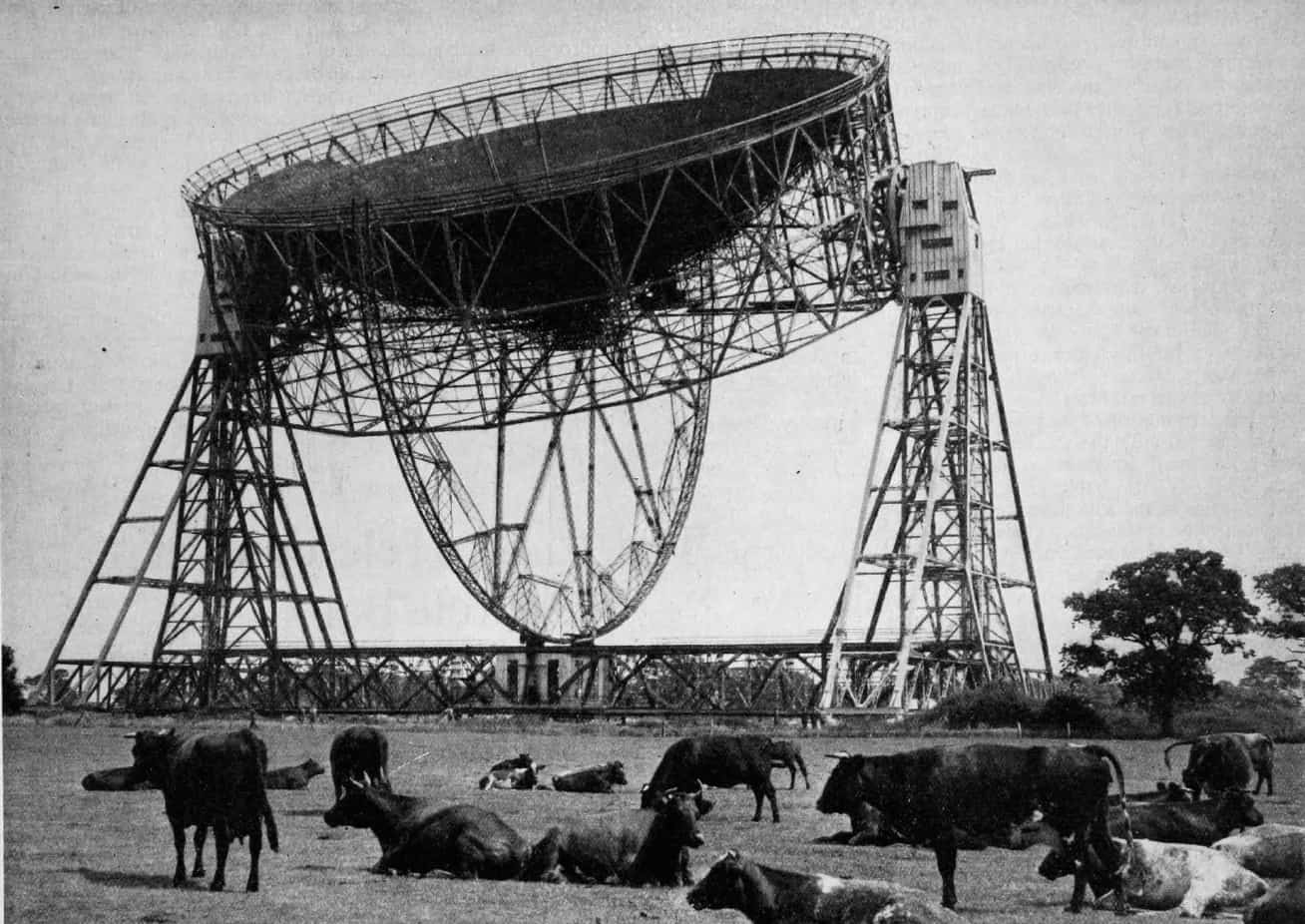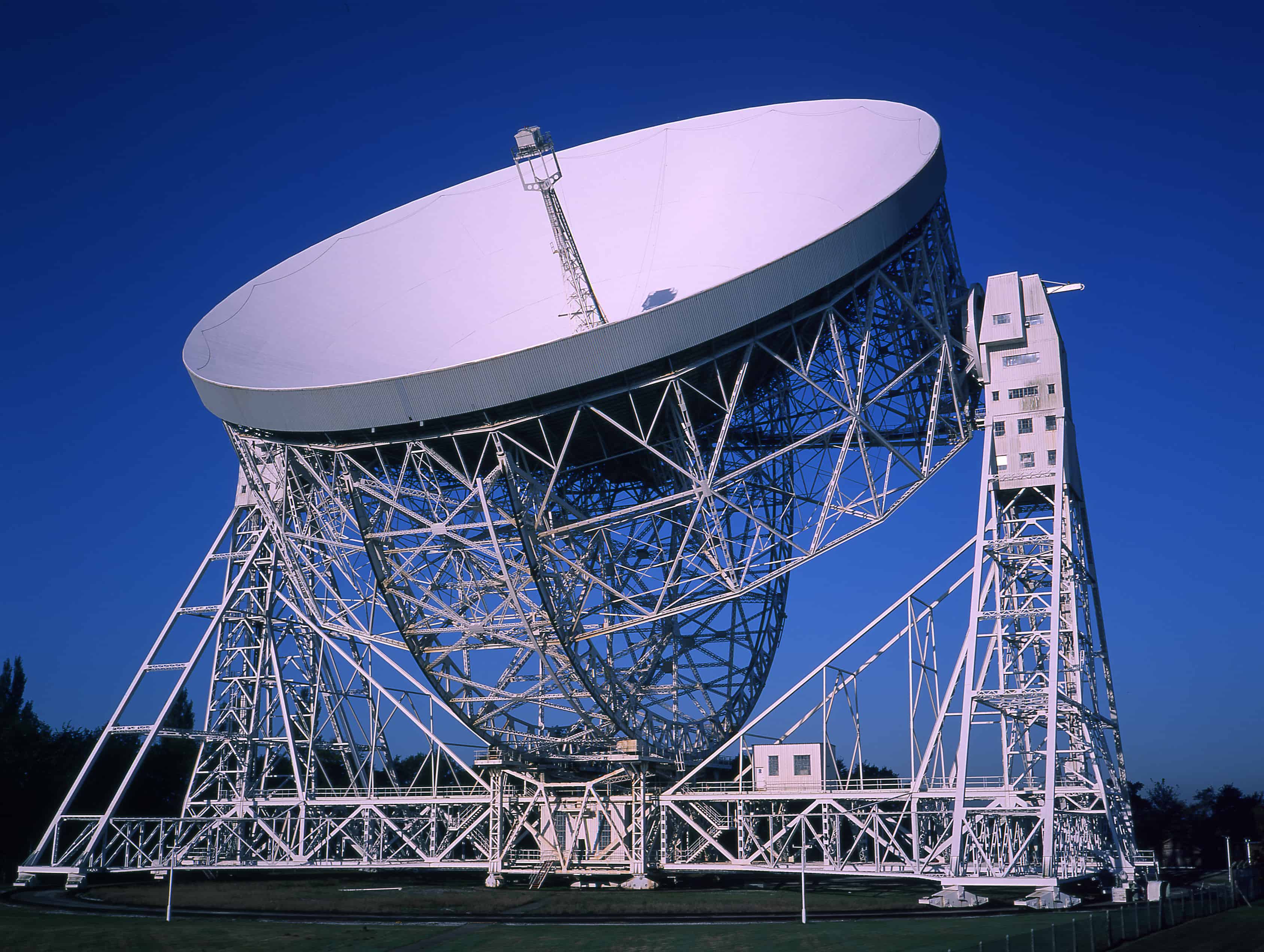
Nearly 60 years ago this month, The Engineer was invited by the Department of Scientific and Industrial Research to visit the Jodrell Bank Observatory in Cheshire. The purpose of the visit was to get a behind-the-scenes look at the station’s latest addition: a steerable dish radio telescope that at the time was the largest in the world.
Known today as the Lovell Telescope – in honour of its chief proponent, the late Sir Bernard Lovell (who gave one of his final interviews to The Engineer)– the construction garnered attention for several reasons. “This enormous instrument is of special interest, not only for the uniqueness and promise for the astronomer but also because of the engineering problems that had to be surmounted to design and build it,” wrote The Engineer in 1957. “Civil, mechanical and electrical engineering techniques are all involved in the successful operation of the radio telescope, sometimes in an original manner.”
With a moveable dish 76.2m (250ft) in diameter, the Lovell telescope is today still the third-largest telescope of its type, as well as a Grade I-listed building. In 2006 it won a BBC competition as the UK’s greatest ‘Unsung Landmark’. But what are now its storied history and place in the national consciousness were, of course, unknown to our predecessors all those years ago, whose focus was primarily the telescope’s construction and operation.

The article went into detail: “The bowl…is carried on two towers by trunnion bearings; it can be turned on those bearings through 180 deg. The towers are mounted on bogies on a circular rail track so that the whole structure can be rotated. Driving and control mechanisms are installed in such a manner that the telescope can be pointed at any given star and can be driven to follow the path of the chosen star till it disappears below the horizon.”
Despite aluminium alloy initially being offered as a possible construction material, the consultants ultimately chose to build the entire telescope from steel. Steel provided the highest strength/cost ratio and had a low coefficient of expansion, meaning that reasonable accuracy of the dish’s shape could be maintained. It was also judged the best material to help overcome one of the telescope’s key challenges: the wind.
Stability in wind was a key consideration and the telescope had to be steady enough to maintain the bowl’s accuracy in moderate winds of 30–40mph. The first designs of the telescope “allowed deflections of several inches – say 6in or 7in”. However, the iteration that was ultimately built meant that “any deviation of the skin of the paraboloid from its true shape [was] intended to be kept down to about 1in”.
The bowl itself was constructed from more than 7,000 stiffened steel plates of 3ft by 3ft, welded to purlins. The purlins were bolted together and attached to the main structure of the telescope, enabling alignment of the shape of the bowl by adjusting the bolted connections. According to this magazine, detailing of the steelwork was “unusually onerous” due to both the structure’s unusual shape and the high degree of accuracy required.
“An idea of the complexity of this aspect of the work may perhaps be given by referring to the purlins. There are 2,200 angle-iron purlins carrying the surface of the bowl. Each had to be curved to different diameters in two planes, so that a purlin lay truly on the surface with one side of the angle iron parallel to it.”
If necessary, the bowl could be fully inverted, with the intention that the telescope could be placed in this position whenever the 62.5ft aerial mast needed to be changed. As for the bowl’s surface, a synthetic flat white paint was specified in order to “prevent a serious concentration of heat”, as well as “encourage a high degree of diffuse reflection of the sun’s rays, so that the steel membrane itself does not get too hot”.
Of course, much work has been done in the intervening 59 years to maintain and upgrade the telescope. Since 2010, the dish has been protected from pigeons’ and other birds’ foulings by two breeding pairs of peregrine falcons (one in each of the telescope’s two support towers). An indication of the structure’s endurance, however, is the fact that, since 1957, just two of the original 64 drive wheels that help it track stars across the night sky have needed to be replaced. They certainly don’t build ’em like they used to.




Nanogenerator consumes CO2 to generate electricity
Whoopee, they've solved how to keep a light on but not a lot else.